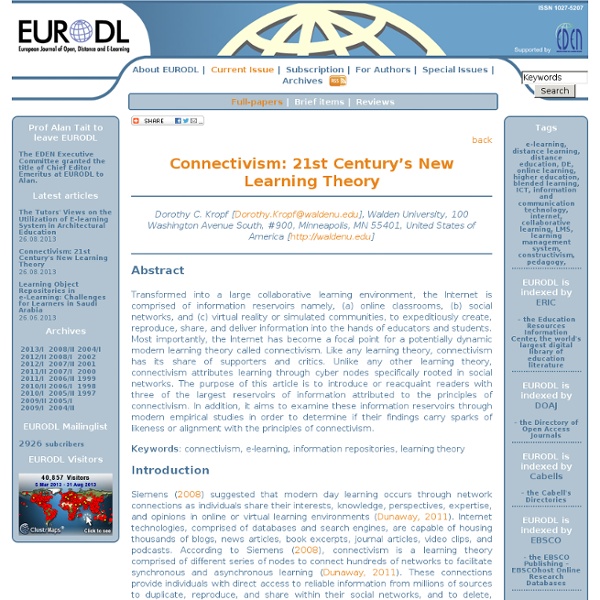Horizon Report > 2014 Higher Education Edition
Login or Create New Account Member Spotlights RIT Launches Nation’s First Minor in Free and Open Source Software and Free Culture Partner News NMC Partners with the Balboa Park Online Collaborative iTUNES U Ideas that Matter and More High Quality, Free EdTech Content Sparking innovation, learning and creativity. > Publications > NMC on iTunes U > Creative Commons NMC Horizon Report > 2014 Higher Education Edition The NMC Horizon Report > 2014 Higher Education Edition is a collaborative effort between the NMC and the EDUCAUSE Learning Initiative (ELI), an EDUCAUSE Program. > Download the NMC Horizon Report > 2014 HiEd Edition PDF (English) > Download the Chinese Translation PDF (via Beijing Open University) > Download the German PDF (via Multimedia Kontor Hamburg) > Download the Japanese PDF (via Open University of Japan) > Download the Portuguese PDF (via Colégio Bandeirantes) > Download the Spanish PDF (via Universidad Internacional de La Rioja - UNIR) > Download the Preview PDF Tags: 2014 News
MOOCtalk | Let's teach the world
Does technology really cut us off from other people?
Jeremy Adam Smith, Web Editor & Producer, Greater Good Science Center | 3/20/14 | | Smarthphones and social media are changing our daily lives and our society. It’s now normal to see two people at a dinner table fiddling with their phones—and why not? But are digital devices and social media disconnecting us from the flesh-and-blood people in our lives? Or can mobile devices actually expand and strengthen our web of contacts, coworkers, friendships, family, and more? Those are the questions tackled in this past week’s Greater Good magazine, published by the UC Berkeley Greater Good Science Center. You can start by taking our quiz, which draws on scientifically validated scales to diagnose the reader’s level of social capital—that is, the web of social networks that research says can help us to be “happier, healthier, and better employed.” Step two is to read social psychologist Juliana Breines’s thought-provoking introductory essay, “Are Some Social Ties Better Than Others?”
7 Great Web Tools To Help Students Study Collaboratively
May 23, 2014 Students love to work in groups and every teacher knows this fact by heart. Group work has several pedagogical pluses that includes developing collaborative and co-operative skills, enhancing social skills and interactions, promoting critical thinking skills, and nurturing a learning environment of trust and support. Now with the web 2.0 technologies, the potential of group work is even bigger. Students can create study groups online and learn collaboratively with others regardless of their geographical locations. 1- Examtime Examtime is a platform that allows you to create, share and discover resources, build mind maps, flashcards, quizzes and notes for free. .Examtime also has a feature called "groups" which enables students to create study groups. 2- Thinkbinder Think binder is another platform where students can create and host their study groups. 3- Google+ Circles and Hangouts 4- Skype Group Video Call 5- Open Study 6- Wikis 7- Google Docs
What’s it like to actually teach online?
I entered the online college classroom where I teach – the one that exists in that ethereal world inside the computer, on the internet and across the wi-fi airwaves – to see that students had scrawled the words “Bonjour!” and “Go, Sox!” on the virtual whiteboard of our French I course. The early students gathered for our synchronous (“real time”) session chatted via their microphones before my arrival. It was the same virtual space where I’d soon review material and engage these enthusiastic learners with an assortment of new tools. Students would write answers on the virtual board. The Community College System of New Hampshire in which I teach offers 381 online courses. On the virtual board, I show the e-book with audio and video to refresh a concept. An easy camaraderie usually fills our virtual space; students get to know each other and I know them, their strengths and weaknesses, those who answer quickly and those who need more modeling and encouragement to respond.
5e86bd_f8856db71d39479698be466ac9443d75.pdf
Projet INTENT - plateforme UNICollaboration
Programme: 12-14 February 2014 - University of León, Spain International Conference: Telecollaboration in University Foreign Language Education Conference Format The abbreviated conference programe as of 15 January can be downloaded here. The detailed conference programme can be downloaded here. All presenters will be asked to send power point presentations ONE week before the conference so that the presentations can be uploaded onto the respective laptops in the rooms. - Facebook: - Twitter: #unicollaboration Please use these social media fora to participate in the conversation in the weeks before the conference. Actuellement les enseignants des universités européennes utilisent de plus en plus l'Internet pour mettre leurs étudiants en contact avec d'autres salles de classe autour du monde afin qu'ils puissent collaborer ensemble, développer leurs compétences en langue étrangère et acquérir de l'expérience dans les échanges interculturels.
5e86bd_1f5398ca7d5049daa1f96bc60d3bbc75.pdf



